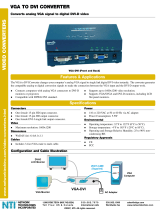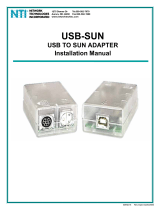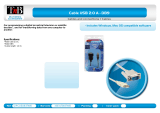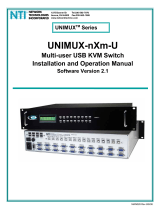
ii
TABLE OF CONTENTS
INTRODUCTION.............................................................................................................................................................1
MATERIALS....................................................................................................................................................................2
DEFINITIONS..................................................................................................................................................................2
FEATURES AND FUNCTIONS.......................................................................................................................................3
RACKMOUNTING INSTRUCTIONS...............................................................................................................................4
To Mount to a Rack .....................................................................................................................................................4
INSTALLATION...............................................................................................................................................................5
RS232 Connection.......................................................................................................................................................7
Power-Up Sequence....................................................................................................................................................8
Limitations....................................................................................................................................................................8
USING THE UNIMUX DVI KVM SWITCH ......................................................................................................................9
Front Panel Control......................................................................................................................................................9
Keyboard Control.........................................................................................................................................................9
Command Mode..........................................................................................................................................................9
Scan Mode..............................................................................................................................................................10
Broadcast Mode......................................................................................................................................................10
Normal Mode ..........................................................................................................................................................10
No Sun Sleep Mode................................................................................................................................................10
Select Country Code...............................................................................................................................................11
Mice and Trackballs with MACs..............................................................................................................................11
RS232 CONTROL.........................................................................................................................................................12
RS232 Connections and Configuration.....................................................................................................................12
Remote Connection................................................................................................................................................12
Baud Rate...............................................................................................................................................................12
Unit Address and Loop Back..................................................................................................................................12
Command Protocol.................................................................................................................................................14
NTI Switch Control Program For Windows 9X, NT, 2000, XP, And Vista.................................................................15
SerTest- RS232 Interface Test Program...................................................................................................................15
Main Options...........................................................................................................................................................15
KEYBOARD FEATURES..............................................................................................................................................17
Keyboard-To-Computer Translation..........................................................................................................................17
Translation Capabilities ..........................................................................................................................................17
Translation Tables ..................................................................................................................................................17
International Sun Keyboards.....................................................................................................................................18
TROUBLESHOOTING..................................................................................................................................................19
INDEX............................................................................................................................................................................19
WARRANTY INFORMATION........................................................................................................................................19
TABLE OF FIGURES
Figure 1- Secure rackmount ears to switch.....................................................................................................................4
Figure 2- Secure switch to a rack....................................................................................................................................4
Figure 3- Connect a DVI monitor ....................................................................................................................................5
Figure 4- Connect the device(s)......................................................................................................................................5
Figure 5- Connect each CPU..........................................................................................................................................6
Figure 6- Connect the AC adapter..................................................................................................................................6
Figure 7- Connect RS232 control terminal......................................................................................................................7
Figure 8- Compatible device combinations.....................................................................................................................8
Figure 9- Country Codes for international SUN keyboards...........................................................................................11
Figure 10- RS232 dip-switches.....................................................................................................................................12
Figure 11- RS232 connection with Matrix-Y-1 cable.....................................................................................................13
Figure 12- Pinout of Matrix-Y-1 cable ...........................................................................................................................13
Figure 13- RS232 Communication Illustrated...............................................................................................................14
Figure 14- Keyboard Layouts........................................................................................................................................18





























